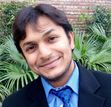What is Digital Signal Processing
What is Digital Signal Processing?
DSP controls diverse sorts of signs with the aim of separating, estimating, or compacting and creating simple signs. Simple signs contrast by taking data and making an interpretation of it into electric beats of differing abundancy, while advanced flag data is converted into parallel configuration where each piece of information is spoken to by two recognizable amplitudes. Another perceptible distinction is that simple signs can be spoken to as sine waves and computerized signals are spoken to as square waves. DSP can be found in any field, regardless of whether it’s oil handling, sound multiplication, radar and sonar, therapeutic picture preparing, or broadcast communications – basically any application in which signals are being compacted and imitated.
So what precisely is advanced flag handling? The computerized flag process takes signals like sound, voice, video, temperature, or weight that have just been digitized and after that controls them scientifically. This data would then be able to be spoken to as discrete time, discrete recurrence, or other discrete structures with the goal that the data can be carefully prepared. A simple to-advanced converter is required in reality to take simple signs (sound, light, weight, or temperature) and change over them into 0’s and 1’s for a computerized design.
A DSP contains 4 key segments:
Registering Engine: Mathematical controls, estimations, and procedures by getting to the program, or errand, from the Program Memory and the data put away in the Data Memory.
Information Memory: This stores the data to be handled and works as an inseparable unit with program memory.
Program Memory: This stores the projects, or errands, that the DSP will use to process, pack, or control information.
I/O: This can be utilized for different things, contingent upon the field DSP is being utilized for, i.e. outer ports, serial ports, clocks, and associating with the outside world.
The following is a figure of what the four parts of a DSP look like in a general framework design.
DSP FIlters
The Chebyshev channel is an advanced channel that can be utilized to isolate one band of recurrence from another. These channels are known for their essential property, speed, and keeping in mind that they aren’t the best in the execution classification, they are more than satisfactory for generally applications. The outline of the Chebyshev channel was designed around the matematical system, known as z-change. Fundamentally, the z-change changes over a discrete-time flag, made up of a succession of genuine or complex numbers into a recurrence space portrayal. The Chebyshev reaction is by and large utilized for accomplishing a speedier move off by permitting swell in the recurrence reaction. These channels are called type 1 channels, implying that the swell in the recurrence reaction is just permitted in the passband. This gives the best estimation to the perfect reaction of any channel for a predefined request and swell. It was intended to evacuate certain frequencies and enable others to go through the channel. The Chebyshev channel is for the most part straight in its reaction and a nonlinear channel could bring about the yield flag containing recurrence segments that were absent in the info flag.
Why Use Digital Signal Processing?
To see how advanced flag preparing, or DSP, contrasts and simple hardware, one would contrast the two frameworks and any channel work. While a simple channel would utilize intensifiers, capacitors, inductors, or resistors, and be moderate and simple to gather, it would be somewhat hard to adjust or change the channel arrange. Nonetheless, similar things should be possible with a DSP framework, only less demanding to plan and change. The channel work on a DSP framework is programming based, so different channels can be looked over. Likewise, to make adaptable and flexible channels with high-arrange reactions just requires the DSP programming, though simple requires extra equipment.
For instance, a down to earth bandpass channel, with a given recurrence reaction ought to have a stopband move off control, passband tuning and width control, interminable weakening in the stopband, and a reaction inside the passband that is totally level with zero stage move. In the event that simple strategies were being utilized, second-arrange channels would require a considerable measure of amazed high-Q segments, which at last implies that it will be to a great degree difficult to tune and alter. While moving toward this with DSP programming, utilizing a limited drive reaction (FIR), the channel’s opportunity reaction to a motivation is the weighted total of the present and a limited number of past info esteems. With no criticism, its solitary reaction to a given example closes when the example comes to the “finish of the line”. In light of these outline contrasts, DSP programming is decided for its adaptability and straightforwardness over simple hardware channel plans.
While making this bandpass channel, utilizing DSP is anything but an unpleasant undertaking to finish. Actualizing it and assembling the channels is substantially less demanding, as you just need to program the channels the same with each DSP chip going into the gadget. Be that as it may, utilizing simple parts, you have the danger of broken segments, changing the circuit and program the channel on every individual simple circuit. DSP makes a moderate and less repetitive method for channel outline for flag handling and builds precision for tuning and changing channels when all is said in done.
The post What is Digital Signal Processing appeared first on Engineers Radar.



